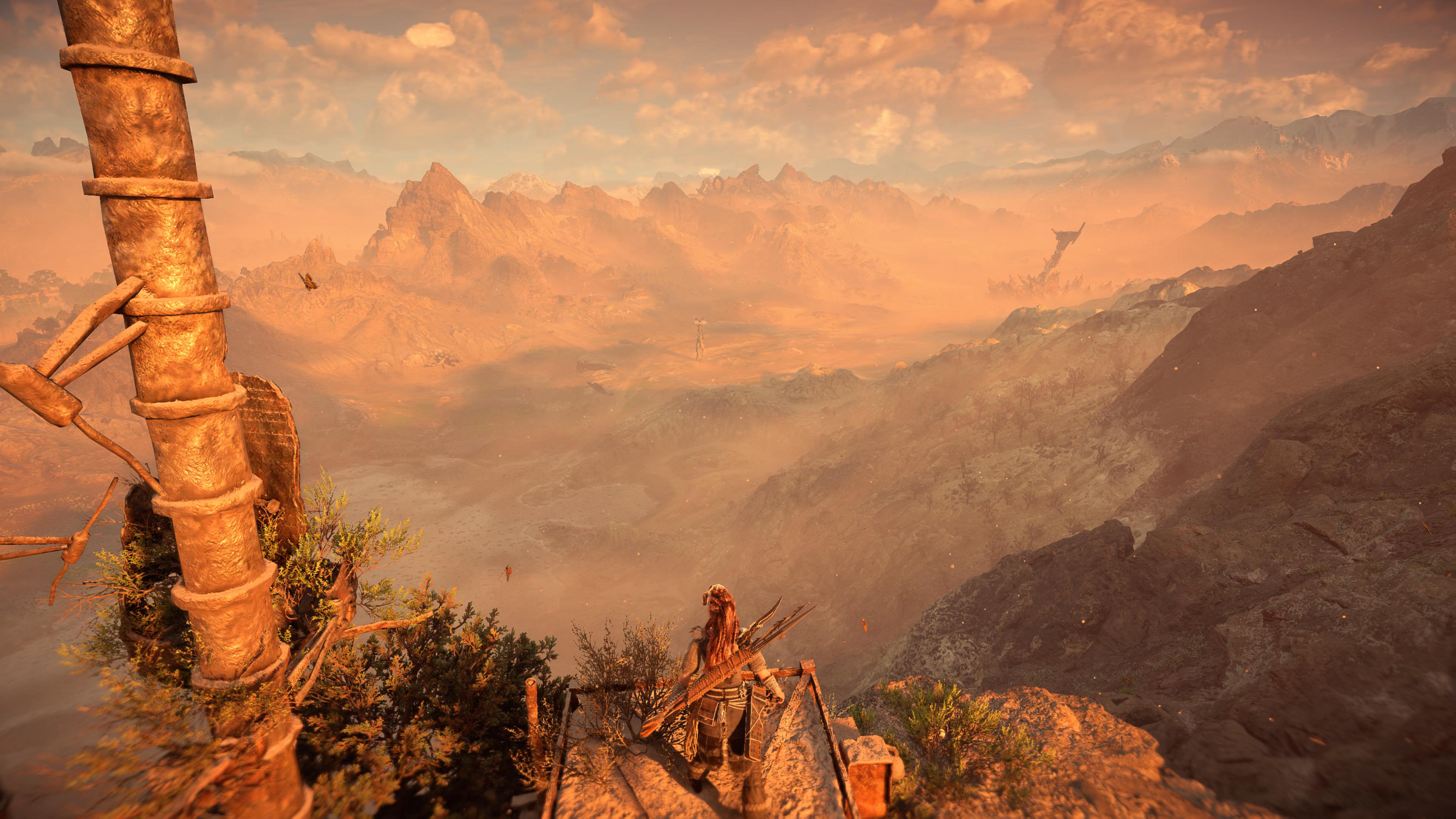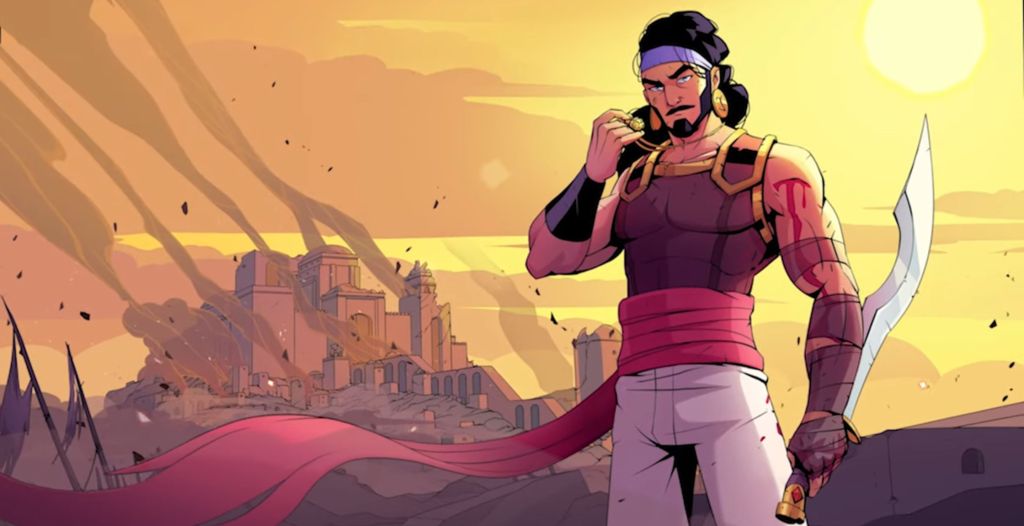As of this writing, I’m 40 hours into Forbidden West. I’ve cleared about half the map and have no idea how much longer it will take me to see the rest of the story, let alone every corner of the map. It’s an exhausting, often repetitive, experience just barely held up by a good story, incredible visuals, and competent game design that lifts the best bits from other video games made in the past 10 years.
If you’re looking for a revolutionary experience that teaches you what open world games can be, Forbidden West isn’t it. But if you’re looking for a competent distraction that soothes and smooths the brain by repeating what open world games have been doing for years, Forbidden West does the job.
Videos by VICE
The line between a good and a bad open world game has grown thin, and Horizon: Forbidden West manages to walk that line with all the grandeur of PlayStation’s exclusive, tent pole releases. But as I push farther into the Forbidden West, unlocking its mysteries and learning its backstory, my mind keeps wandering and I wonder if I have it in me to play it for another 10 hours, let alone another 40.

Horizon: Forbidden West’s story picks up immediately where the first game left off, with Aloy venturing to the post-post-apocalyptic West in search of a replacement for the GAIA AI system that manages the terraforming of Earth.
The first several hours of this game are spent at the edge of the first game’s map, trapped behind a gate that leads to the titular Forbidden West. You don’t have all the traversal tools you’ll have in the full world and the opening area often feels like elevated DLC content for the first game meant to bridge the gap between the two games. There’s a lot of treading of old story beats, codas for lingering plot threads from the previous game, and meeting up with old characters.
With this in mind, I want to give players some advice. Rush the story in Horizon: Forbidden West and ignore most of the side content, especially at the start. Horizon’s story and structure are constantly pushing the player west. Aloy’s quest is urgent and many of those question marks on your map are gated behind traversal tools you won’t have until much later in the game.
Dozens of times in the first 20 hours I would explore the map only to encounter an area I couldn’t enter because Aloy hadn’t done a story mission that would give her the equipment needed to explore. And later, once I was able to go back, the question mark was usually just a box of loot.
You’ll encounter dozens of settlements full of sidequests and characters that tell Aloy rumors. These rumors typically put worthwhile side content on the map. In this way, you learn which of those hidden areas are just loot and which are collectibles, rebel outposts, or side adventures.
Keep pushing west. Focus on the story. You will gain multiple tools later in the game that make traversal and exploration much much easier and far more rewarding. Trust me.
Because Forbidden West is a huge game. The map is enormous, lush, and packed with question marks to explore. There are dozens and dozens of weapons and armor sets, each are upgradable. I’ve collected 30 different weapons and 8 different outfits. I know of about 20 more weapons and 8 more outfits I could buy, but haven’t found the need for.
You need this many weapons in your journey because taking down megafauna isn’t a simple affair. The giant robot dinosaurs, hippos, and pterodactyls have different weaknesses and the player needs different strategies to take them down. Several times during my playthrough I attempted to barrel through an encounter and take down the enemies as quickly as possible only to do next to no damage before getting unceremoniously murdered by a robot hippopotamus.
Each time, I’d take a step back, observe the animals a bit longer, equip the correct weapon that does damage the creature is weak to, and lay out a few traps. Thinking about each encounter beforehand and taking the time to prepare can turn a daunting challenge into a trivially quick fight.
Fighting robot dinosaurs is the core loop of the game. Aloy finds the beasts wandering the world, typically standing right in front of something she needs to access, and has to fight them off. Each beast is unique with several subtypes that require different weapons to properly address.
The weapon upgrades typically require specific materials from the monsters. Getting the upgrade materials isn’t as simple as killing the beast, often a beast has to be killed in a specific way. Early on, I needed a razorclaw tail to upgrade some armor. I had to find their hunting grounds and specifically knock this tail off the back of the creature, which was no easy feat.
Like Monster Hunter, the game’s entire economy runs on beast bits. The broken shards of them are both the currency and the crafting material Aloy uses to make new arrows. A fragment of monster muscle can be turned into a number of different traps and arrows types. Long parts of your day can be given over just to perfecting your gear by killing them.
It is in these moments that the game smooths out your brain. Robot dinosaur hunting is a perfect brain-dead activity. It’s fun, the weapons all have impact, and it’s just engaging enough to help you forget a terrible workday.

I’m tired of this kind of game design and have been for a long time. I like the idea of open worlds more than the execution, and throughout both Zero Dawn and Forbidden West I have pushed through the game because I find its world and story fascinating. This allure got me to complete a racing minigame, something I’d sworn off ever doing in an open world.
As I pushed into a desert territory that surrounds the ruins of Las Vegas, I happened across several people racing robots through the wastes. The race was directly in the path of my next main quest objective, and as I neared Aloy noted that few people in this future can tame and ride robots. Isn’t it strange, then, that there’s people in the desert racing robots for fun?
That simple hook had me. I stopped to chat with the racers and they said they’d answer my question … but only if I beat them in a race. This was how I came to take 10 minutes out of my day to complete the racing mini game and get my answer. The story drove me to the race and rewarded me with information once I completed it. They told me where I could find the next race, but I have no plans of visiting.
But 40 hours in, even the story is wearing thin for me. The central mystery of the first game—what happened to the world and what is Aloy’s connection to it—has been answered. In Forbidden West those questions are answered and Aloy’s quest is more of a traditional video game one—gather several McGuffins to save the world.
There are other mysteries afoot. Strange prometheans with powers beyond anything even the Old World could offer harry Aloy along her journey, the tribes in the West are fighting a civil war, Sylens—Aloy’s erstwhile ally—has seemingly malevolent intentions. But I’m finding it harder with each play session to push through the bloated open world to see how it all plays out.
Much of this is my fault. I have a tendency to seek out every activity in a vast game like this and become exhausted well before the conclusion. But some of it is developer Guerilla Game’s fault, in my opinion, widening its scope when it should have narrowed it. There’s a good, even a great, game buried under layers of dated design and open world activities.
At the moment, it is the characters that keep me going. The relationships between Aloy and her allies are so well realized and fascinating that it keeps me holding on. If the mystery of the broken world formed the core of Zero Dawn, it’s relationships between people that form the corn of Forbidden West.
The game constantly asks, in both its side quests and its main story, what do we owe the past? It is, at its core, a game about things left tragically unsaid. It’s about messages between families misinterpreted, the dead forcing their legacy onto the living, and the living doing the best they can with the information they have.
There’s a sidequest that I hated completing that involved Aloy helping a tinkerer track down a repeating message from the old world. The tinkerer had learned the basics of wireless communication and was picking up a sad message over the air waves that reminded her of her dead brother, who she never got to say goodbye to.
After killing monsters, climbing towers, and spending an hour going through the steps I needed to help the woman, I helped her get closure with her dead brother by helping her hear this message from people 1,000 years dead. It was a woman, talking to a man. Both were dying and she was saying goodbye. She was forgiving him for slights never that only the two of them will remember.
The tinkerer wanted to know if Aloy thought the man got the message. Aloy said she didn’t think so. The tinkerer lamented this, saying that it’s sad that most people never get the messages meant for them when it really matters.
There was something so sad about this bit of dialogue, so well delivered, that it took me aback. There are dozens of these moments in Forbidden West, little gems gleaning underneath the Ubisoft-style open world surface. It’ll keep me pushing forward, at least for a little bit.
More
From VICE
-

Screenshot: Xbox Game Studios -

Screenshot: Midway -

Screenshot: Ubisoft -

Screenshot: Bandai Namco Entertainment
